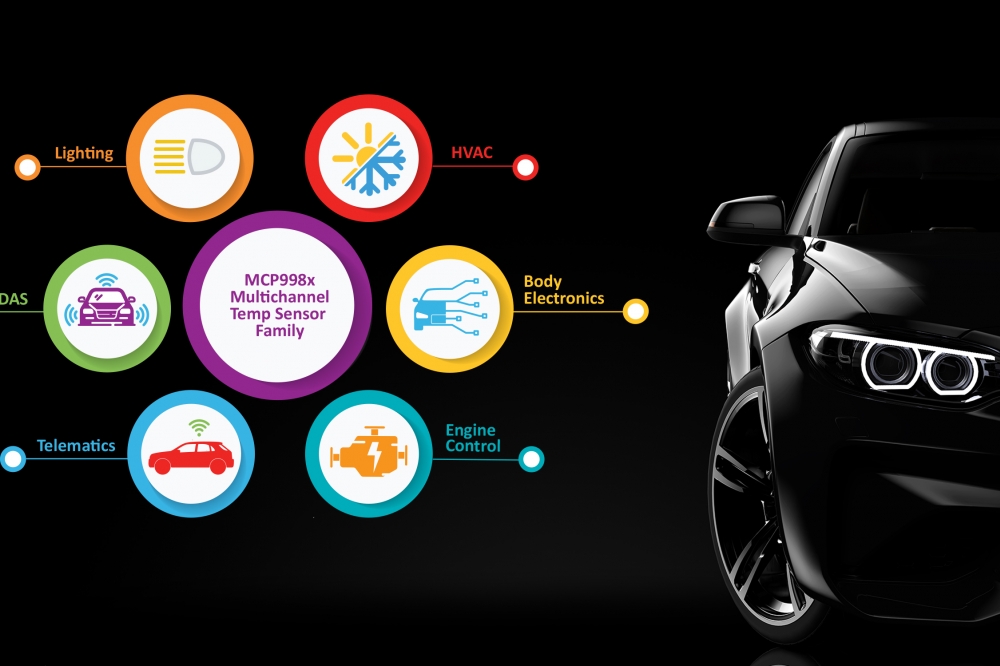Qualcomm Snapdragon Ride, a new platform for Autonomous Driving unveiled

Qualcomm Technologies, Inc. a subsidiary of Qualcomm Incorporated,
unveiled at the 2020 Consumer Electronics Show (CES) its newest addition
to the company’s extensive portfolio of automotive products with the
new Qualcomm Snapdragon Ride Platform – one of the automotive industry’s
most advanced, scalable and open autonomous driving solutions, which
consists of the family of Snapdragon Ride Safety system-on-chips (SoCs),
Snapdragon Ride Safety Accelerator and Snapdragon Ride Autonomous
Stack.
Snapdragon Ride aims to address the complexity of autonomous driving and ADAS by leveraging its high-performance, power-efficient hardware, industry-leading artificial intelligence (AI) technologies and pioneering autonomous driving stack to deliver a comprehensive, cost and energy efficient systems solution. The unique combination of Snapdragon Ride SoCs, accelerator and autonomous stack offers automakers a scalable solution designed to support three industry segments of autonomous systems, namely L1/L2 Active Safety ADAS for vehicles that include automatic emergency braking, traffic sign recognition and lane keeping assist functions; L2+ Convenience ADAS for vehicles featuring Automated Highway Driving, Self-Parking and Urban Driving in Stop-and-Go traffic; and L4/L5 Fully Autonomous Driving for autonomous urban driving, robo-taxis and robo-logistics.
The Snapdragon Ride Platform, based on the Snapdragon family of automotive SoCs and accelerator, is built on scalable and modular heterogenous high-performance multi-core CPUs, energy efficient AI and computer vision (CV) engines, industry-leading GPU. The platform with combination of SoCs and accelerator can be used as needed to address every market segment offering industry-leading thermal efficiency, from 30 Tera Operations Per Second (TOPS) for L1/L2 applications to over 700 TOPS at 130W for L4/L5 driving. This platform can therefore result in designs that can be passively or air-cooled, thereby reducing cost, and increasing reliability, avoiding the need for expensive liquid cooled systems and allowing for simpler vehicle designs, and extending the driving range for electric vehicles. The Snapdragon Ride SoCs and accelerator are designed for functional safety ASIL-D systems.
Snapdragon Ride is expected to be available for pre-development to automakers and tier-1 suppliers in the first half of 2020. Qualcomm Technologies anticipates Snapdragon Ride-enabled vehicles to be in production in 2023.
“We are pleased to be introducing our first-generation Snapdragon Ride platform, which is highly scalable, open, fully customisable and highly power optimised autonomous driving solution designed to address a range of requirements from NCAP to L2+ Highway Autopilot to Robo Taxis. Combined with our Snapdragon Ride Autonomous Stack, or an automaker or Tier-1’s own algorithms, our platform aims at accelerating the deployment of high-performance autonomous driving to mass market vehicles,” said Nakul Duggal, Senior Vice President, Product Management, Qualcomm Technologies, Inc.
While the company believes the next wave of innovation may be in the L2+ Convenience ADAS segment, the hardware solutions utilised in Snapdragon Ride from a single system-on-chip (SoC) for an Active Safety ADAS system driven by regulatory mandates to a highly scalable architecture of multiple SoCs and dedicated autonomous driving accelerators allowing for fully autonomous self-driving systems.
Integrated as a part of Snapdragon Ride is Qualcomm Technologies’ new purpose-built autonomous driving software stack, a modular and scalable solution available to automotive OEM and Tier-1 suppliers to accelerate their development and innovations. This software stack facilitates automakers’ abilities to offer increased safety and comfort to everyday driving by offering optimised software and applications for complex use cases, such as self-navigating human-like highway driving, as well as choice of modular options like perception, localisation, sensor fusion and behavior planning. This software infrastructure for Snapdragon Ride supports customer specific stack components to be co-hosted with the Snapdragon Ride Autonomous Stack components.
Qualcomm Technologies’ integrated automotive platforms drive leadership and growth across telematics, infotainment and in-car connectivity, with an order pipeline of more than $7 billion. Qualcomm Technologies currently is the leading semiconductor supplier in telematics and Bluetooth car connectivity and has secured infotainment and digital cockpit wins with 19 of the 25 global automaker brands. All major global automakers currently use the company’s broad portfolio of automotive solutions across telematics, infotainment and connectivity, and continue to work alongside with Qualcomm Technologies to deliver safe, robust and efficient automotive solutions, including Snapdragon Ride. Snapdragon Ride incorporates the expertise of the automotive ecosystem needed to meet the automotive standards and infrastructure for safety hardware and software.
“Solutions that integrate the highest levels of functional safety are critical to the mass deployment of advanced driver assistance systems and autonomous vehicles,” said Chet Babla, Vice President of Automotive, Automotive and IoT line of business, Arm. “The future of mobility mandates collaboration across the industry, and the work we are doing with Qualcomm Technologies to help integrate Arm functional safety solutions into Snapdragon Ride is one example of what can be achieved by working together to improve the safety of autonomous driving technologies.”
“Synopsys’ IP investment in ISO 26262 certification, AEC Q100 and quality management eases the development of a new generation of ADAS systems,” said John Koeter, Senior Vice President of Marketing and Strategy for IP, Synopsys. “Combining Synopsys’ automotive-grade DesignWare Interface IP, ARC Processor IP and Self-Test and Repair (STAR) Memory System with Snapdragon Ride supports Qualcomm Technologies to achieve high levels of functional safety, as well as accelerates certification of their SoCs.”
“BlackBerry QNX is pleased to have been selected by Qualcomm Technologies for the Snapdragon Ride,” said John Wall, Senior Vice President and Co-Head, BlackBerry QNX. “Both the QNX OS for Safety and QNX Hypervisor for Safety are trusted to deliver a safe, secure, and reliable software foundation for autonomous driving platforms. We look forward to building on our existing working relationship with Qualcomm Technologies as they further expand into the autonomous driving segment.”
“Infineon has a long history of delivering core semiconductor technology that makes cars safer, smarter and greener. Our AURIX microcontrollers combined with our expertise in dependable computing serve as fundamental building blocks for safety critical automotive applications,” said Ritesh Tyagi, Head of the Automotive Silicon Valley Innovation Centre, Infineon. “The work between Infineon and Qualcomm Technologies to design and offer a dependable, scalable and power-efficient compute system has the ability to help advance the market towards a wider deployment of highly automated vehicles.”
“We are pleased to work with Qualcomm Technologies on next-generation AUTOSAR architectures that scale to meet the needs of our customers, integrating our EB corbos software with Snapdragon Ride,” said Artur Seidel, Vice President, Americas, Elektrobit. “Our product offerings featuring Qualcomm Technologies’ technology are expected to make it easier for Tier-1’s and OEMs to quickly and efficiently bring advanced autonomous systems to production vehicles.”
“ON Semiconductor is delighted to have our ADAS family of sensors integrated into Snapdragon Ride,” said Ross Jatou, Vice President and General Manager, the Automotive Sensing Division, ON Semiconductor. “By working closely with Qualcomm Technologies, we ensure seamless and robust interoperability with Qualcomm Technologies’ processors and software, which helps OEMs and Tier-1’s introduce next-generation solutions quickly and cost effectively. Furthermore, the flexibility to add in-cabin functions— like driver monitoring and cabin monitoring to the infotainment computer cockpit and autonomous driving systems—should greatly accelerate the availability of these new safety and convenience features.”
Qualcomm Snapdragon Ride, a new platform for Autonomous Driving unveiled
Modified on Monday 13th January 2020
Find all articles related to:
Qualcomm Snapdragon Ride, a new platform for Autonomous Driving unveiled


 Add to my Reading List
Add to my Reading List Remove from my Reading List
Remove from my Reading List











